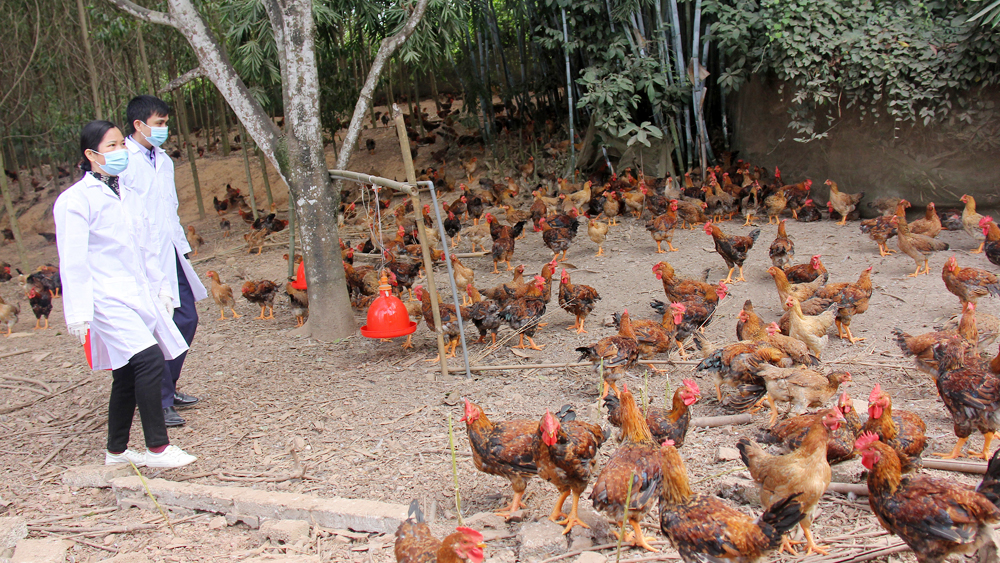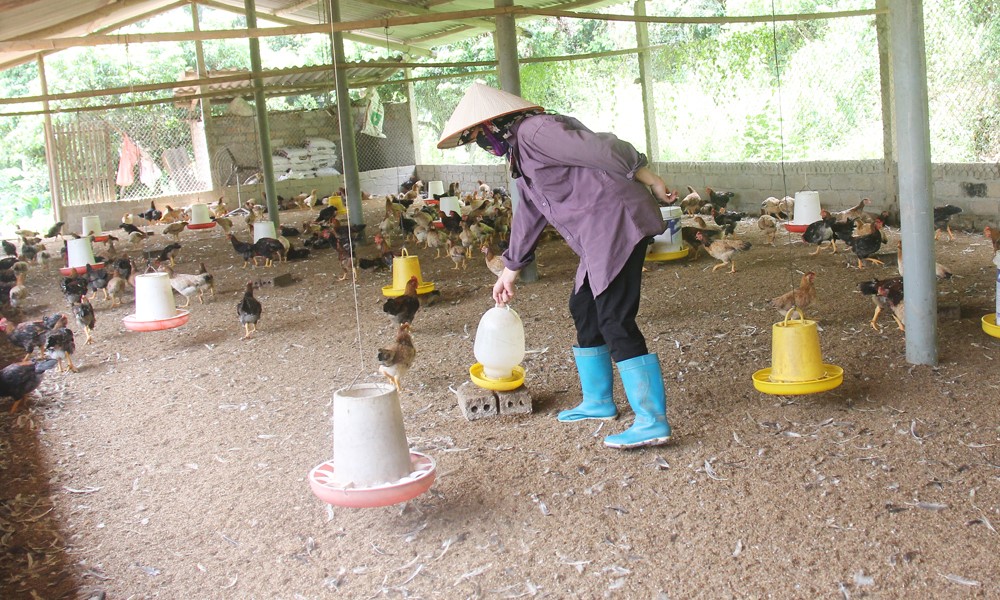Yen The hill chicken "capital" busy for Tet
Farmers joyfully take care of chicken
According to the district People's Committee, Yen The has 3,100 poultry farms with a total of about 4.1 million, including 3.85 million chickens. Thanks to following biosafety and disease safety processes and techniques, local chickens have developed well with better quality. The Yen The hill chicken brand has been increasingly affirmed.
 |
|
Veterinary staff guide farmers to implement biosafety techniques for chicken raising in Rung Dai village, Tam Tien commune. |
Local farmers have focused on raising long-term varieties which produce more delicious products. According to some breeders in Yen The, consumers often need chickens to worship during Tet. Therefore, locals are focusing on raising chickens with beautiful appearance, delicious meat, and moderate weight.
Besides live chickens, products made from chickens such as sausages, pies and patties are also well consumed in many markets. At the Yen The Green Agricultural Cooperative, many orders have been signed with partners. To ensure supply, the cooperative has prepared raw materials and increased processing capacity. It is expected to supply about 5 tons of sausages, pies, patties and dried chicken, as well as 25 tons of live chickens to the market.
Improving product quality
Yen The district has identified hill chicken as the main livestock and developed a large-scale, quality chicken farming area. In 2011, Yen The hill chicken was the first livestock in the country to be granted an exclusive trademark protection certificate by the Intellectual Property Office of Vietnam under the Ministry of Science and Technology. Yen The was also the first district in the North to meet the standards of an avian influenza and Newcastle epidemic-free zone in 2022.
In order to maintain the disease-free area, the district People's Committee has directed specialized agencies, communes and towns to synchronously and thoroughly implement biosafety farming measures for chickens, while managing and monitoring epidemics in each area and livestock farming household to minimize damage caused by epidemics.
According to Luong Van Hien, deputy head of the district Department of Agriculture and Rural Development, during the upcoming Lunar New Year, the locality plans to supply about 2.2 million chickens (equivalent to more than 5,000 tons of live chickens) to the market. Most chickens are 4-5 months old, weighing 2-3 kg each.
The sale of hill chickens is currently quite favorable, with an average price of 70,000-90,000 VND (2.87-3.69 USD) per kg of live chicken (depending on the type). With this selling price, farmers have a good profit, enabling them to maintain and improve product quality.
The district has eight One Commune Once Product (OCOP) products from chicken, including four 4-star products and the rest 3-star. Last year, the district continued to implement a model supporting the breeding of herbal hill chickens. According to professional agencies, chickens raised under this model have good resistance, uniform development, delicious meat quality and higher economic efficiency.
In the run up to Tet, chicken prices are predicted to increase. However, this will be also a time of cold and rain, making barns wet, so diseases can easily hit chickens. Therefore, farmers need to proactively prevent and control diseases. The authorities will continue to strengthen management and supervision of the total herd, focusing on inspecting and controlling the circulation and trade of animals and animal products in the district.
 Bắc giang
Bắc giang

















Reader's comments (0)